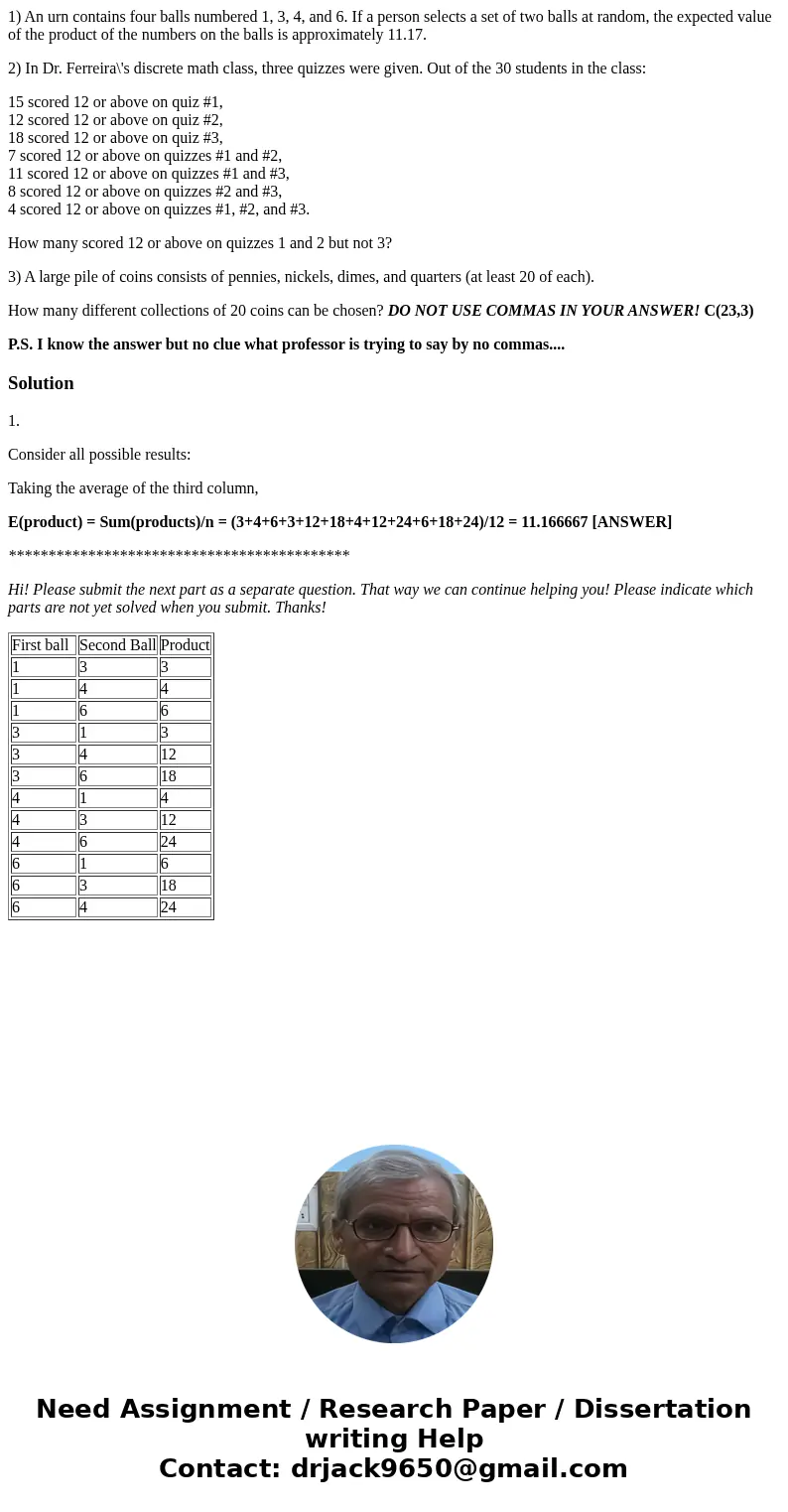1 An urn contains four balls numbered 1 3 4 and 6 If a perso
1) An urn contains four balls numbered 1, 3, 4, and 6. If a person selects a set of two balls at random, the expected value of the product of the numbers on the balls is approximately 11.17.
2) In Dr. Ferreira\'s discrete math class, three quizzes were given. Out of the 30 students in the class:
15 scored 12 or above on quiz #1,
12 scored 12 or above on quiz #2,
18 scored 12 or above on quiz #3,
7 scored 12 or above on quizzes #1 and #2,
11 scored 12 or above on quizzes #1 and #3,
8 scored 12 or above on quizzes #2 and #3,
4 scored 12 or above on quizzes #1, #2, and #3.
How many scored 12 or above on quizzes 1 and 2 but not 3?
3) A large pile of coins consists of pennies, nickels, dimes, and quarters (at least 20 of each).
How many different collections of 20 coins can be chosen? DO NOT USE COMMAS IN YOUR ANSWER! C(23,3)
P.S. I know the answer but no clue what professor is trying to say by no commas....
Solution
1.
Consider all possible results:
Taking the average of the third column,
E(product) = Sum(products)/n = (3+4+6+3+12+18+4+12+24+6+18+24)/12 = 11.166667 [ANSWER]
*******************************************
Hi! Please submit the next part as a separate question. That way we can continue helping you! Please indicate which parts are not yet solved when you submit. Thanks!
| First ball | Second Ball | Product |
| 1 | 3 | 3 |
| 1 | 4 | 4 |
| 1 | 6 | 6 |
| 3 | 1 | 3 |
| 3 | 4 | 12 |
| 3 | 6 | 18 |
| 4 | 1 | 4 |
| 4 | 3 | 12 |
| 4 | 6 | 24 |
| 6 | 1 | 6 |
| 6 | 3 | 18 |
| 6 | 4 | 24 |

 Homework Sourse
Homework Sourse